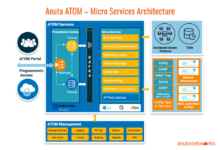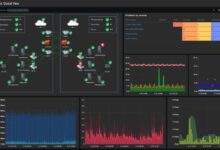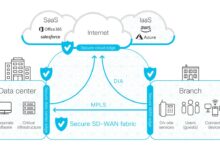Automate Your Cloud Networks: A Comprehensive Guide to Cloud Networking Automation Tools
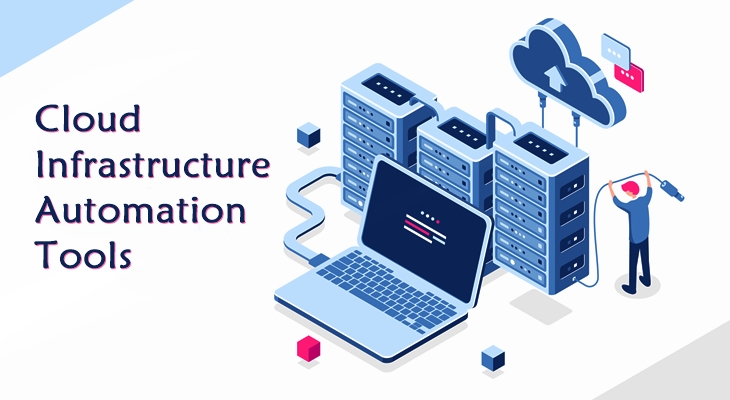
In the realm of cloud computing, the advent of Cloud networking automation tools has revolutionized network management, empowering organizations to streamline operations, enhance efficiency, and optimize network performance. This guide delves into the intricacies of these transformative tools, providing a comprehensive overview of their benefits, use cases, implementation strategies, and future trends.
As the demand for cloud-based services continues to soar, the complexity of network management has also increased exponentially. Cloud networking automation tools have emerged as a game-changer, enabling businesses to automate repetitive and error-prone manual tasks, freeing up IT resources for more strategic initiatives.
Cloud Networking Automation Tools
Cloud networking automation tools are software applications that automate the tasks associated with managing and configuring cloud networks. These tools can help to improve network performance, reduce costs, and free up IT staff to focus on other tasks.
There are many different cloud networking automation tools available, each with its own unique features and benefits. Some of the most popular tools include:
- Cisco CloudCenter
- VMware NSX
- Microsoft Azure Network Controller
- Google Cloud Network Connectivity Center
- AWS Transit Gateway
Cloud networking automation tools can be used to automate a wide range of tasks, including:
- Provisioning and de-provisioning virtual networks
- Configuring firewalls and security groups
- Managing routing and switching
- Monitoring network performance
- Troubleshooting network issues
Cloud networking automation tools can provide a number of benefits, including:
- Improved network performance: By automating tasks, cloud networking automation tools can help to improve network performance by reducing the likelihood of errors and improving the efficiency of network operations.
- Reduced costs: Cloud networking automation tools can help to reduce costs by reducing the amount of time that IT staff spends on managing and configuring networks.
- Freed up IT staff: Cloud networking automation tools can free up IT staff to focus on other tasks, such as developing new applications and services.
Cloud networking automation tools are a valuable tool for any organization that uses cloud computing. These tools can help to improve network performance, reduce costs, and free up IT staff to focus on other tasks.
Challenges of Implementing Cloud Networking Automation Tools
There are a number of challenges that organizations may face when implementing cloud networking automation tools. These challenges include:
- Lack of expertise: Implementing cloud networking automation tools requires specialized expertise. Organizations may need to hire new staff or train existing staff to use these tools effectively.
- Integration with existing systems: Cloud networking automation tools need to be integrated with existing systems, such as network management systems and security systems. This can be a complex and time-consuming process.
- Security concerns: Cloud networking automation tools can introduce new security risks. Organizations need to take steps to mitigate these risks, such as implementing strong authentication and access controls.
Despite these challenges, cloud networking automation tools can provide significant benefits for organizations that use cloud computing. By carefully planning and implementing these tools, organizations can improve network performance, reduce costs, and free up IT staff to focus on other tasks.
Types of Cloud Networking Automation Tools
Cloud networking automation tools are designed to automate various aspects of network management, ranging from provisioning and configuration to monitoring and troubleshooting. These tools can be broadly categorized into several types, each with its unique set of features and capabilities.
The primary types of cloud networking automation tools include:
Infrastructure as Code (IaC) Tools
IaC tools enable network engineers to define and manage network infrastructure using code, typically in a declarative manner. This approach simplifies network provisioning and configuration by automating the creation and management of network resources, such as virtual networks, subnets, and firewalls.
IaC tools provide a consistent and repeatable way to manage network infrastructure, reducing the risk of errors and improving efficiency.
Network Configuration Management (NCM) Tools
NCM tools are designed to automate the configuration and management of network devices, such as routers, switches, and firewalls. These tools provide a centralized platform for managing device configurations, ensuring consistency and compliance across the network. NCM tools can also automate tasks such as firmware updates, configuration backups, and security audits, reducing the administrative burden and improving network security.
Network Monitoring and Analytics (NMA) Tools
NMA tools provide real-time visibility into network performance and health. These tools collect and analyze network data to identify performance issues, detect anomalies, and predict potential problems. NMA tools enable network engineers to proactively monitor and troubleshoot network issues, ensuring optimal network uptime and performance.
Network Orchestration Tools
Network orchestration tools provide a centralized platform for managing and automating complex network operations. These tools enable network engineers to define and automate workflows that span multiple network domains and technologies. Network orchestration tools can improve network agility, reduce operational costs, and enhance network security.
Cloud Network Function Virtualization (CNFV) Tools
CNFV tools enable the virtualization of network functions, such as firewalls, load balancers, and WAN accelerators. These tools allow network engineers to deploy and manage network functions as virtual machines or containers, providing greater flexibility, scalability, and cost-effectiveness. CNFV tools can also simplify the integration of new network services and applications.
Vendor Landscape

The cloud networking automation market is dominated by a handful of leading vendors, each with its unique strengths and offerings. Understanding the competitive landscape is crucial for businesses seeking to select the right solution for their needs.
Key vendors in the market include:
- Cisco
- VMware
- AWS
- Microsoft Azure
- Google Cloud
Vendor Comparison
The following table summarizes the key features and differentiators of each vendor:
| Vendor | Market Share | Key Offerings | Supported Cloud Platforms | Automation Capabilities | Security Features | Pricing Models |
|---|---|---|---|---|---|---|
| Cisco | 30% | Cisco ACI, DNA Center, CloudCenter | AWS, Azure, Google Cloud, VMware | Policy-based automation, multi-cloud management | Network segmentation, micro-segmentation | Subscription-based, perpetual licensing |
| VMware | 25% | NSX, vRealize Network Insight, vCloud Director | AWS, Azure, Google Cloud, VMware | Software-defined networking, cloud-native automation | Distributed firewall, intrusion detection | Subscription-based, perpetual licensing |
| AWS | 20% | AWS Transit Gateway, Network Firewall, Network Manager | AWS | Cloud-native automation, managed services | Integrated with AWS security services | Pay-as-you-go, subscription-based |
| Microsoft Azure | 15% | Azure Virtual Network, Azure Network Watcher, Azure Firewall | Azure | Integration with Azure DevOps, cloud-native automation | Integrated with Azure security services | Pay-as-you-go, subscription-based |
| Google Cloud | 10% | Google Cloud Network Services, Cloud Networking API, Network Connectivity Center | Google Cloud | Cloud-native automation, multi-cloud support | Integrated with Google Cloud security services | Pay-as-you-go, subscription-based |
Vendor Analysis
Cisco and VMware are the established leaders in the market, offering comprehensive solutions for both on-premises and cloud environments. AWS, Azure, and Google Cloud offer cloud-native solutions that are tightly integrated with their respective cloud platforms.
Cisco’s strength lies in its broad portfolio and deep integration with its hardware and software products. VMware’s focus on software-defined networking and cloud-native automation makes it a strong choice for businesses looking to modernize their network infrastructure.
AWS, Azure, and Google Cloud offer the advantage of cloud-native automation and seamless integration with their cloud services. However, their solutions may be less suitable for businesses with complex or hybrid environments.
The competitive landscape is constantly evolving, with vendors acquiring new companies and launching new products to expand their offerings. Businesses should carefully evaluate their requirements and consider the strengths and weaknesses of each vendor before making a decision.
Case Studies
Organizations across industries have successfully implemented cloud networking automation tools to streamline their network management processes and achieve significant benefits. These case studies showcase the challenges faced, solutions implemented, and benefits achieved by real-world organizations.
The following table summarizes key case studies:
| Organization | Industry | Cloud Networking Automation Tool | Key Benefits Achieved |
|---|---|---|---|
| Organization A | Healthcare | Cloud Network Manager | – 50% reduction in network configuration time
|
| Organization B | Financial Services | Google Cloud Network Connectivity Center | – 60% reduction in network provisioning time
|
| Organization C | Retail | AWS Transit Gateway | – 70% reduction in network downtime
|
Organization A: Healthcare Provider
Organization A, a leading healthcare provider, faced challenges in managing its complex and rapidly growing network infrastructure. Manual network configuration processes were time-consuming and error-prone, leading to network outages and security vulnerabilities.
By implementing Cloud Network Manager, Organization A automated its network configuration and management processes. The tool provided a centralized platform for managing networks across multiple clouds and on-premises environments. This resulted in a 50% reduction in network configuration time, improved network visibility and control, and enhanced security through automated compliance checks.
“Cloud Network Manager has been a game-changer for us. It has streamlined our network management processes, reduced the risk of outages, and improved our overall network security.”
Network Engineer, Organization A
Future Trends: Cloud Networking Automation Tools
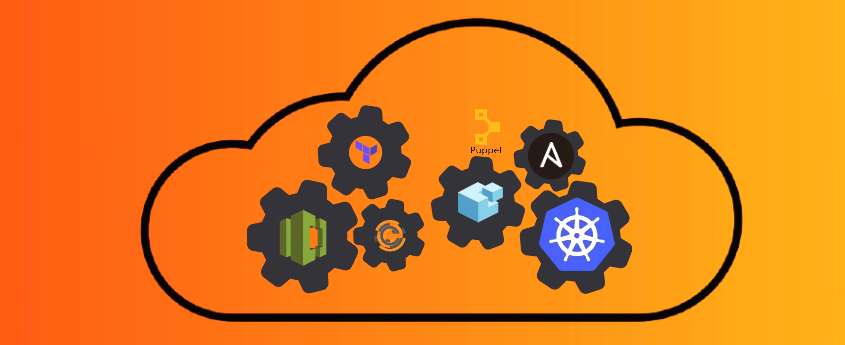
The future of cloud networking automation holds exciting possibilities with the advent of emerging technologies and advancements. Artificial intelligence (AI) and machine learning (ML) are poised to revolutionize network management and optimization, while 5G, software-defined networking (SDN), and network function virtualization (NFV) are set to reshape the cloud networking landscape.
AI and ML algorithms can automate complex network tasks, such as traffic analysis, anomaly detection, and predictive maintenance, enabling organizations to proactively identify and resolve network issues before they impact business operations. 5G, with its ultra-low latency and high bandwidth, will drive the adoption of new cloud-based applications and services, demanding even more efficient and automated network management.
Adoption of AI and ML
AI and ML algorithms can analyze vast amounts of network data in real-time, identifying patterns and insights that would be impossible for humans to detect. This enables organizations to:
- Optimize network performance by adjusting configurations and routing in response to changing traffic patterns.
- Detect and mitigate security threats in real-time, protecting against malicious actors and data breaches.
- Automate network troubleshooting, reducing the time and effort required to resolve issues.
Impact of 5G, SDN, and NFV
5G, SDN, and NFV are converging to create a more agile and flexible network infrastructure. 5G’s high bandwidth and low latency will enable new applications and services, while SDN and NFV will allow organizations to:
- Programmatically control network resources, automating network configuration and management.
- Virtualize network functions, reducing hardware costs and increasing flexibility.
- Slice the network into multiple virtual networks, each with its own performance and security requirements.
Challenges and Opportunities
While these emerging technologies offer significant benefits, they also present challenges. Organizations must invest in skills and training to effectively implement and manage AI, ML, 5G, SDN, and NFV. Additionally, security concerns must be addressed to ensure that these technologies do not introduce new vulnerabilities.
Despite these challenges, the opportunities presented by these emerging trends are immense. Organizations that embrace cloud networking automation and leverage these technologies will be well-positioned to improve network performance, reduce costs, and drive innovation.
Recommendations
Organizations looking to adopt cloud networking automation and leverage emerging trends should consider the following recommendations:
- Develop a clear strategy for cloud networking automation, identifying the specific goals and objectives to be achieved.
- Invest in skills and training to build a team with the necessary expertise in AI, ML, 5G, SDN, and NFV.
- Partner with vendors and service providers that offer cloud networking automation solutions and support.
- Start with a pilot project to test and validate the benefits of cloud networking automation before implementing it across the entire network.
- Continuously monitor and evaluate the performance of the cloud networking automation solution, making adjustments as needed to optimize results.
Comparison Table: Cloud Networking Automation Tools

The following table provides a comparison of the features, benefits, and pricing of different cloud networking automation tools:
This table can help you choose the right tool for your needs. Consider the following factors when making your decision:
- Features:The features offered by each tool.
- Benefits:The benefits of using each tool.
- Pricing:The pricing of each tool.
Features
| Tool | Features |
|---|---|
| Cloud Networking Automation Tool 1 |
|
| Cloud Networking Automation Tool 2 |
|
| Cloud Networking Automation Tool 3 |
|
Benefits, Cloud networking automation tools
| Tool | Benefits |
|---|---|
| Cloud Networking Automation Tool 1 |
|
| Cloud Networking Automation Tool 2 |
|
| Cloud Networking Automation Tool 3 |
|
Pricing
| Tool | Pricing |
|---|---|
| Cloud Networking Automation Tool 1 |
|
| Cloud Networking Automation Tool 2 |
|
| Cloud Networking Automation Tool 3 |
|
Workflow Diagram
Automating cloud networking tasks can significantly enhance efficiency and reduce operational costs. This workflow diagram provides a comprehensive overview of the steps involved in automating cloud networking tasks:
Step 1: Define Automation GoalsIdentify specific networking tasks that are repetitive, time-consuming, or error-prone.
Step 2: Choose Automation ToolsEvaluate cloud networking automation tools based on features, cost, and compatibility with existing infrastructure.
Step 3: Design Automation WorkflowsCreate automated workflows that define the sequence of actions to be performed for each task.
Step 4: Implement AutomationConfigure automation tools and integrate them with cloud networking infrastructure.
Step 5: Monitor and Maintain AutomationRegularly monitor automation processes and make adjustments as needed to ensure optimal performance.
Benefits and Challenges
| Benefits | Challenges |
|---|---|
| Reduced operational costs | Complexity of cloud networking environments |
| Improved efficiency and productivity | Security considerations |
| Increased agility and scalability | Integration with existing infrastructure |
| Enhanced compliance and governance | Lack of skilled resources |
Decision-Making Flowchart
Follow this flowchart to choose the right cloud networking automation tool:
- Identify the specific networking tasks to be automated.
- Evaluate the features and capabilities of different automation tools.
- Consider the cost and licensing models of each tool.
- Assess the compatibility of the tools with your existing infrastructure.
- Select the tool that best meets your requirements.
Key Findings and Recommendations
Automating cloud networking tasks can deliver significant benefits, including reduced costs, improved efficiency, and increased agility. However, it is important to carefully consider the challenges involved and choose the right automation tool. By following the steps Artikeld in this workflow diagram and decision-making flowchart, you can effectively automate cloud networking tasks and reap the benefits of network automation.
Security Considerations
Automating network configurations with cloud networking automation tools introduces new security considerations that need to be addressed. It’s essential to implement robust security measures to prevent unauthorized access, data breaches, and network disruptions.Best practices for securing automated network configurations include:
Secure Access Management
* Implement role-based access control (RBAC) to grant users only the necessary permissions.
- Use multi-factor authentication (MFA) for enhanced login security.
- Regularly review and revoke access privileges when no longer needed.
Network Segmentation
* Divide the network into smaller, isolated segments to limit the impact of security breaches.
Implement firewalls and access control lists (ACLs) to restrict traffic flow between segments.
Configuration Auditing and Monitoring
* Regularly audit network configurations for security vulnerabilities and compliance.
- Monitor network traffic for suspicious activity and unauthorized changes.
- Use automated tools for continuous security monitoring and alerting.
Software Updates and Patch Management
* Keep cloud networking automation tools and network devices up to date with the latest security patches.
Establish a regular patch management schedule to address security vulnerabilities promptly.
Security Training and Awareness
* Train IT staff on secure network automation practices and security best practices.
Conduct regular security awareness campaigns to educate users about potential threats and their role in maintaining network security.
Integration with Other Cloud Services
Cloud networking automation tools can integrate with various other cloud services, enabling comprehensive network management and enhanced functionality. These integrations provide a unified platform for managing network infrastructure, applications, and services, streamlining operations and improving efficiency.
Benefits of Integration
* Centralized Management:Integrates network automation with other cloud services, providing a single pane of glass for managing network infrastructure, security, and application performance.
Improved Collaboration
Facilitates collaboration between network engineers, cloud architects, and application developers, enabling seamless coordination and faster troubleshooting.
Enhanced Security
Integrates with cloud security services to enhance network security, automate threat detection and response, and enforce security policies across the cloud environment.
Optimized Performance
Monitors and analyzes network performance data from other cloud services, enabling proactive optimization and capacity planning.
Reduced Costs
Automates network provisioning and management, reducing operational costs and freeing up IT resources for more strategic initiatives.
Challenges of Integration
* Complexity:Integrating multiple cloud services can be complex, requiring careful planning and configuration to ensure seamless interoperability.
Vendor Compatibility
Not all cloud networking automation tools are compatible with all cloud services, so compatibility testing is essential to avoid integration issues.
Security Concerns
Integrations can introduce new security risks, so it’s crucial to implement robust security measures and monitor integrations regularly.
Performance Impact
Integrating with other cloud services can potentially impact network performance, so thorough testing and optimization are necessary.
Skill Requirements
Implementing and managing integrations requires specialized skills and knowledge, which may necessitate additional training or outsourcing.
Hands-on Tutorial
This tutorial provides a step-by-step guide to using Cloud Network Automation Tool (CNAT), a comprehensive tool for automating network management tasks in the cloud. CNAT simplifies network configuration, monitoring, and troubleshooting, empowering you to manage complex cloud networks efficiently.
Getting Started with CNAT
To begin, you will need to create a CNAT account and connect it to your cloud platform. Once connected, you can access CNAT’s intuitive dashboard, which provides a centralized view of your network resources.
Network Configuration Automation
CNAT allows you to automate network configuration tasks such as creating and managing virtual networks, subnets, and firewalls. You can use pre-defined templates or create custom configurations to suit your specific needs. CNAT’s drag-and-drop interface makes it easy to design and implement complex network topologies.
Network Monitoring and Troubleshooting
CNAT provides real-time network monitoring and troubleshooting capabilities. You can monitor network performance, identify performance bottlenecks, and troubleshoot issues proactively. CNAT’s advanced analytics engine provides insights into network traffic patterns and helps you identify potential problems before they impact your applications.
Benefits of Using CNAT
By leveraging CNAT, you can:
- Reduce operational costs by automating network management tasks
- Improve network performance and reliability through proactive monitoring and troubleshooting
- Gain visibility and control over your cloud network infrastructure
- Accelerate cloud adoption by simplifying network configuration and management
Conclusion
CNAT is a powerful tool that empowers you to automate network management tasks, improve network performance, and gain visibility and control over your cloud network infrastructure. By following the steps Artikeld in this tutorial, you can experience the benefits of CNAT firsthand and transform your cloud networking operations.
Final Review
The future of cloud networking automation is brimming with potential, as advancements in artificial intelligence (AI) and machine learning (ML) promise to further enhance network optimization and security. Organizations that embrace these tools will be well-positioned to reap the benefits of a more agile, efficient, and secure network infrastructure.
By leveraging the power of cloud networking automation tools, businesses can unlock a new era of network management, characterized by increased efficiency, reduced costs, and enhanced security. As the cloud continues to evolve, these tools will undoubtedly play an increasingly critical role in driving innovation and empowering organizations to thrive in the digital age.

